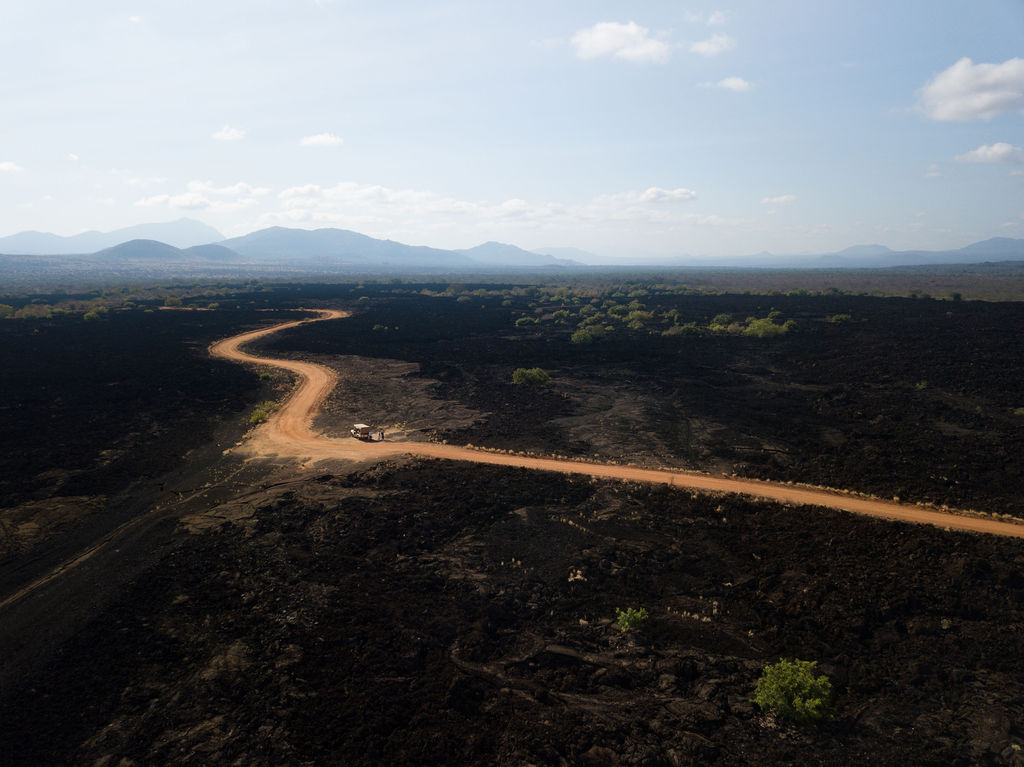
The Guiding team at Angama Amboseli recently went on an exploratory mission to discover one of our famous neighbouring areas. Our journey began at the crack of dawn as we drove through the picturesque countryside towards the Chyulu Gate of Tsavo West. The three hours went quickly as we watched the landscape transform from lush greenery to the rugged beauty of Tsavo.
Tsavo has two distinct parks: Tsavo East and Tsavo West National Parks, which are well known for their unique geological features, landscapes, and wildlife. Together, they cover nearly 22,000 square kilometres, making Tsavo the largest national park in Kenya and one of the largest in the world. In 1948, the park was divided into two sections when the railway from Mombasa to Kenya's interior was laid – we were all raised on the infamous legends of the ‘Maneaters of Tsavo’ and the stories of the great railway.
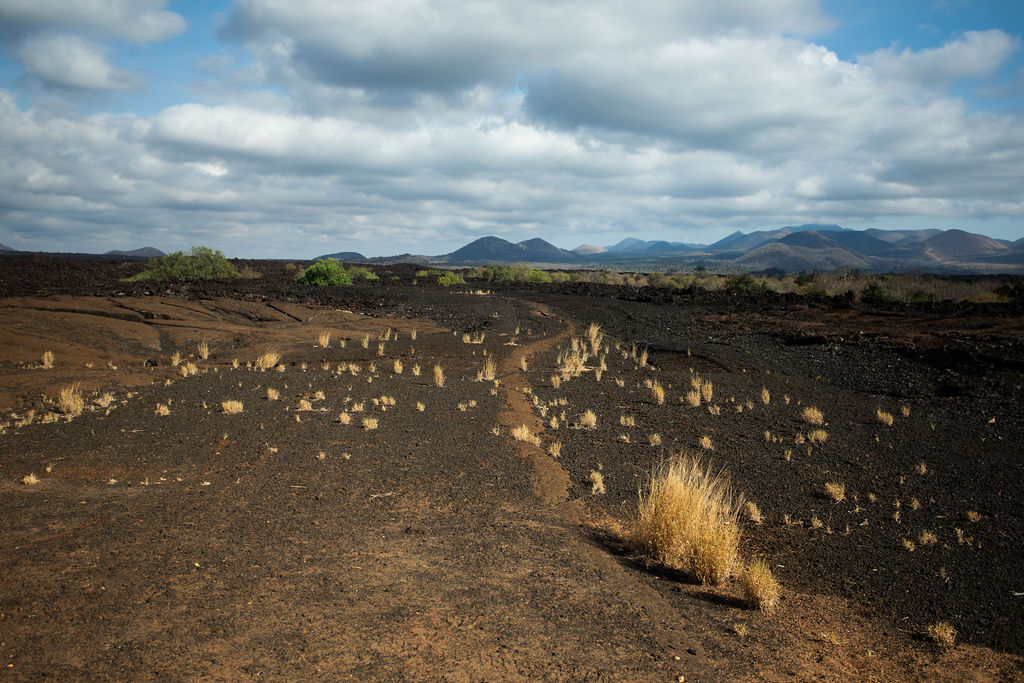

Our first stop was Shetani Lava Flows, which were truly a sight to behold. The black, twisted lava formations stretch across the horizon. Forget seeing it; here, you can feel the raw power of nature. We were amazed at the volcanic eruptions that formed this landscape, leaving us in awe of the Earth's natural processes. The lava is believed to have been formed 500 years ago, and incredibly, it still stands strong.
Shetani means ‘devil’ in Kiswahili, and apparently, the communities living in the area at the time believed it was the devil himself emerging from the earth. This vast expanse of folded black lava spreads for 50 square kilometres near the base of the Chyulus Hills. I couldn’t help but think that it looked as if Mount Kilimanjaro dropped its tissue on its way to its final destination over in Tanzania.
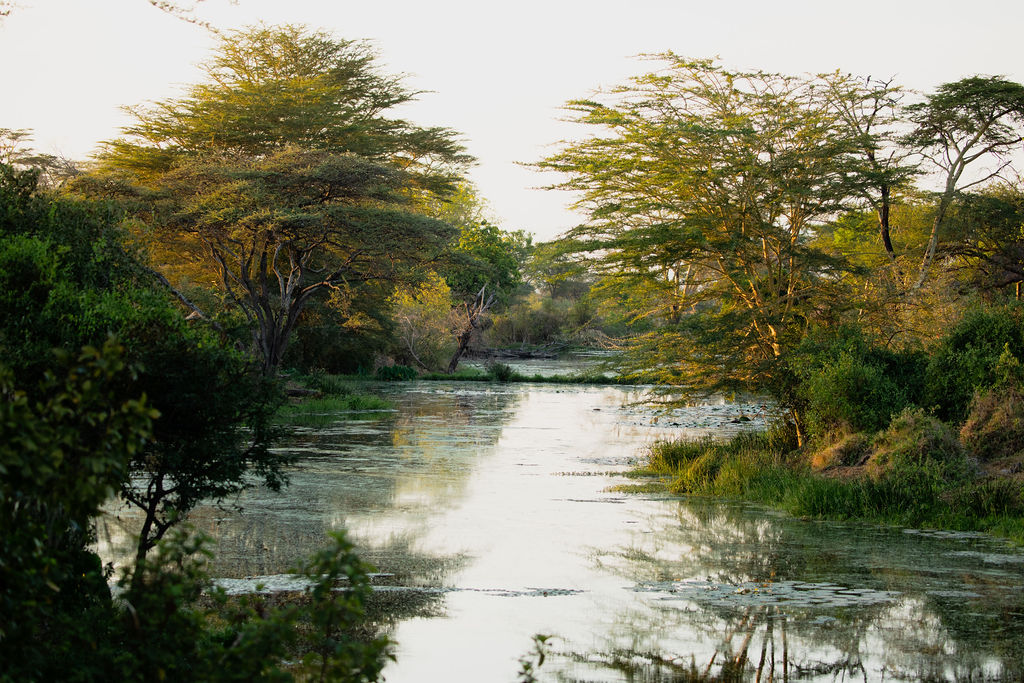
After the scorched black earth of the lava flows, we were so happy to see the oasis that is Mzima Springs. Mzima means ‘whole’ in Swahili, which describes the place perfectly. With its crystal-clear waters and lush greenery, the Springs are home to a diverse array of wildlife. A little viewing hut in the middle of the Springs meant that we could spy on the aquatic life from behind a strong glass window below the water level. We marvelled at the tilapia and Labeo (barbel) freshwater fish, crocodiles and hippos lounging in the water. Underwater safaris are not a common occurrence for us land-based guides. We loved it!
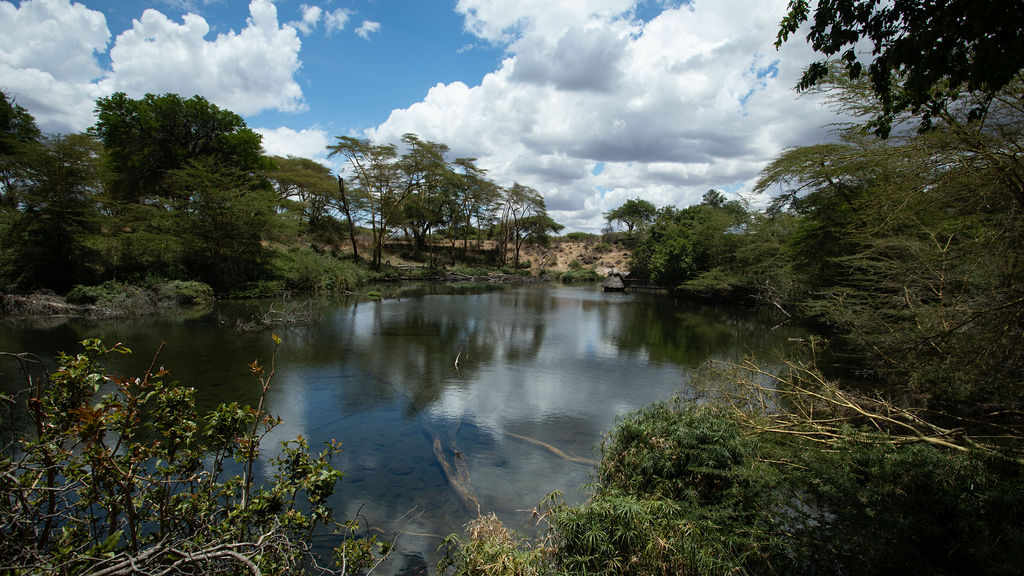

Throughout our trip, birdlife flourished, including the vibrant African fish eagle and the graceful crowned crane. We were also lucky to see the golden-breasted starling, which, for some of us, was a lifer. Our safari continued as we encountered the elusive fringe-eared oryx, a magnificent sight against the backdrop of Tsavo's golden savannah.
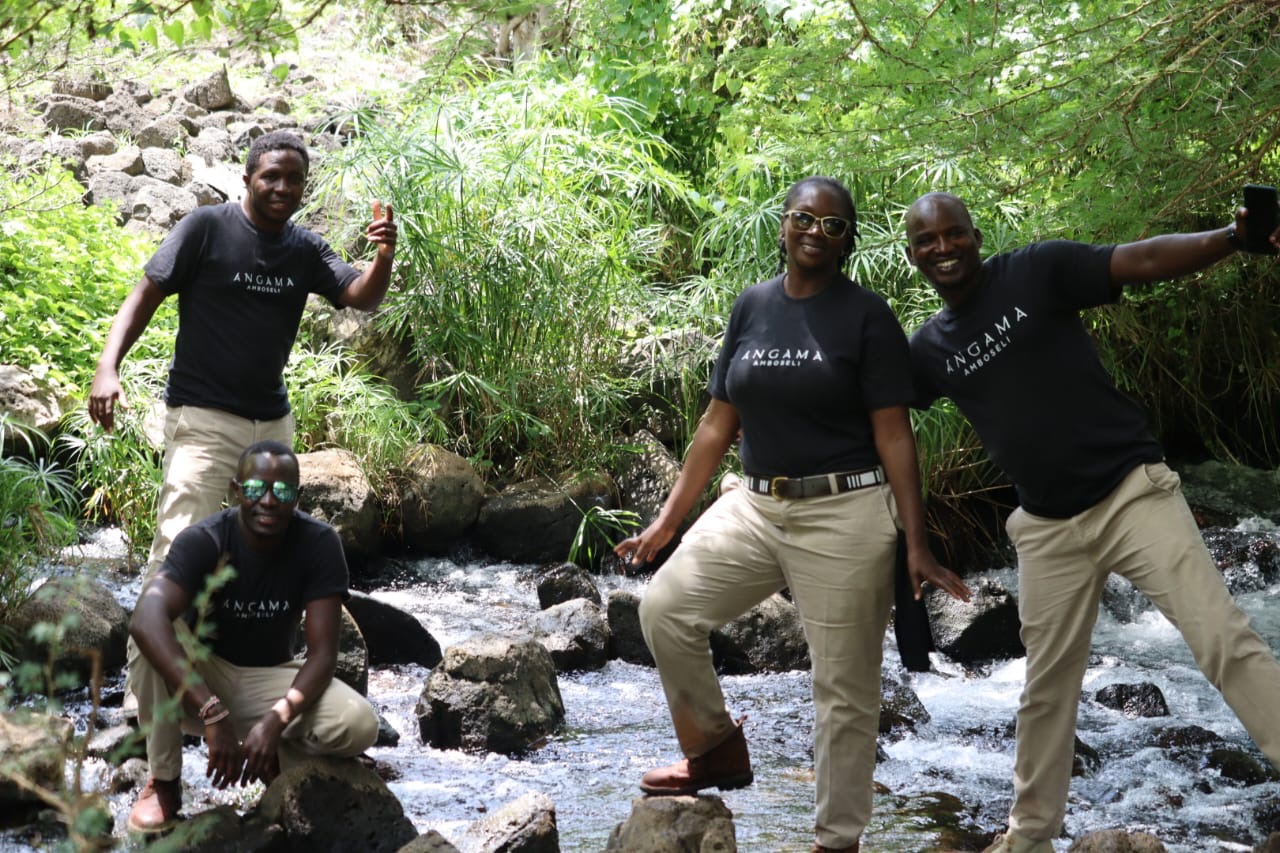
As our journey ended, we all agreed that Tsavo had left its mark on us, from its rugged landscapes to its rich wildlife diversity. It is an exciting adventure for guests wanting to explore more of the ever-surprising and wonderful Greater Amboseli Ecosystem — we have it all, from devilish lava, crystal-clear underwater worlds, Amboseli watery marshes and dry lakes, not to mention our own little jewel in the crown: emerald green Kimana Sanctuary.
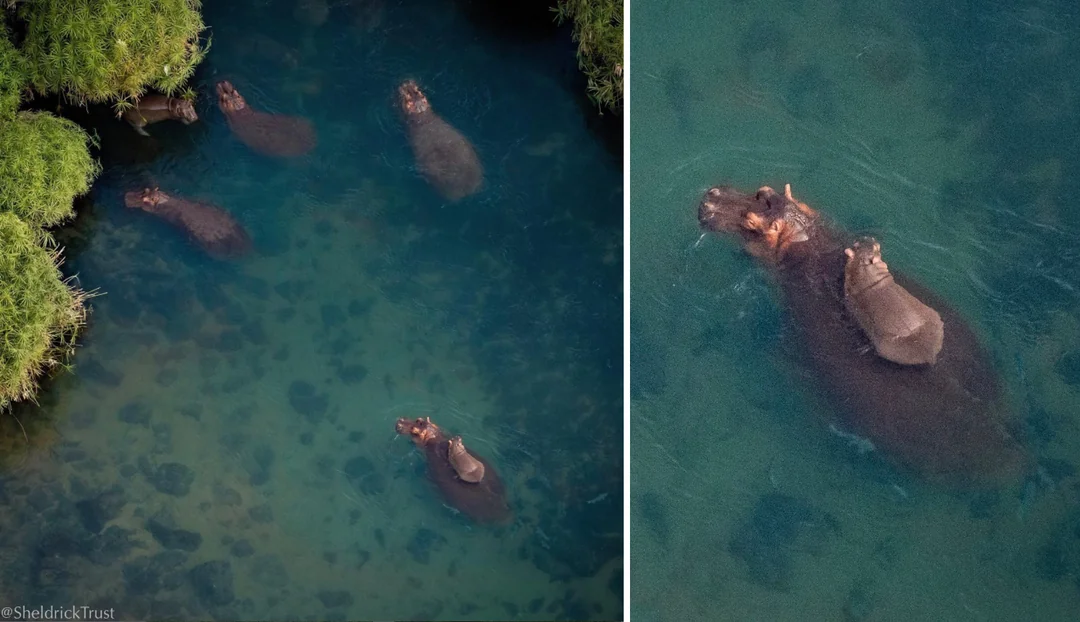
We simply couldn't miss the opportunity to share this adorable photograph of a hippo and her calf in the clear waters of Mzima Springs, taken by Sheldrick Wildlife Trust while on an aerial patrol.
Filed under: East Africa Travel
Subscribe for Weekly Stories
Comments (1):
30 June 2024
Love the hitchhiker!!

The Angama Foundation